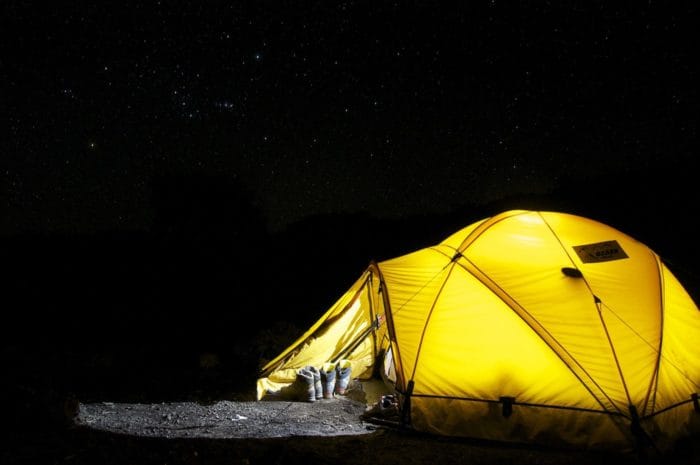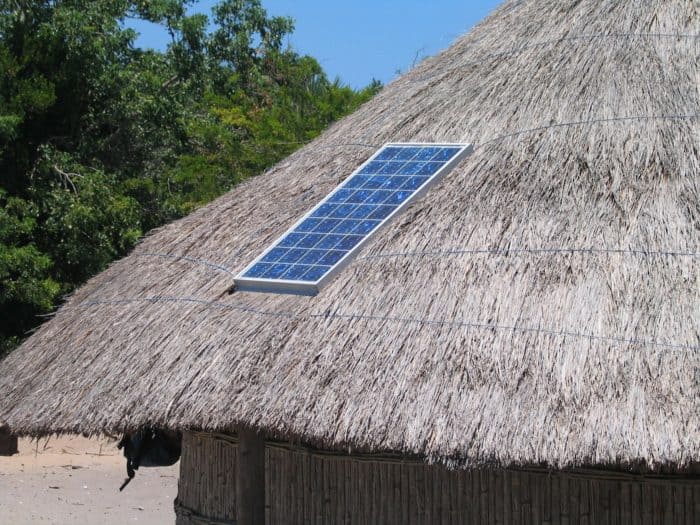Honda by Jackery HLS 290 Vs Rockpals 300W, Which One Is The Best?
Two brands that have grown a lot and become more and more popular within the last year are Jackery and Rockpals. Both of them make portable solar generators/power stations in different sizes that are great for the outdoors, and today I am going to compare the No products found. to the Rockpals 300W.
It’s called Honda by Jackery because American Honda Motor Co. Inc has partnered with Jackery to create an eco-friendly portable power station.
Honda has a great reputation because of their engines that last forever, the question is: Can Jackery help Honda reach the top when it comes to lithium power stations as well? They’re not quite like engines, even though they’re often called gas-free generators.
Jackery also makes the popular Explorer 240, which is a lot like the HLS 290. I’ve answered a question at the bottom about their differences. You can use the table of contents to get straight to it.
After the comparison, I will also share the best solar generator alternatives to the Jackery HLS 290 and Rockpals 300. Most are great not only for the outdoors but for homeowners that deal with power outages.
Now, let’s get into the comparison.
Related Post: Goal Zero Yeti 400 Vs Jackery Explorer 500
Jackery HLS 290 And Rockpals 300W – Specifications Compared
Can’t see the whole table? Scroll left/right on smaller screens.
What The Jackery HLS 290 Has In Common With Rockpals 300W
Let’s start with naming the features both Jackery and Rockpals have put into these portable solar generators.
Battery Type
The first one is the fact that both of them have lithium batteries inside. This is a necessary part of being a good portable power station. Lithium has a couple of advantages compared to lead-acid batteries, one being the weight, so when it’s a battery you’re going to carry around, it should be lithium in 2020.
Screen
A screen with relevant information is an essential feature on a solar generator that lets you easily monitor your battery. Both the HLS 290 and Rockpals 300W have a screen and will tell you input/output watts, and state of charge.
The Rockpals 300W has more information on the screen, but the Jackery has the essentials at least.

Inverter
Both of them have a pure sine wave inverter, so you can safely charge your sensitive electronics using the AC port. The difference between them is how capable the inverter is, but we’ll talk more about that soon.
An inverter changes the 12V battery power into 120V, so it can power your electronics through the common AC wall-outlet.
Ports
One AC outlet can be found on both the Jackery HLS 290 and Rockpals 300W, so you can plug electronics into it that you would usually plug into the wall outlets in your home. This makes it better than the smaller power banks since they usually don’t have any other outputs than USB ports.
Speaking of USB ports, both the portable solar generators have several USB ports. Jackery has put two of them on the HLS 290, while Rockpals has gone further and put 4 USB ports, two are 3.0 and quick-charge compatible.
USB ports are a necessity on power stations today since so many of our devices can be charged through it. None of the two have a USB C port, but that’s the only thing I am missing on both when it comes to outputs.
The common cigarette lighter 12V plug has made it into both of them, and this is where you can plug-in devices you usually plug into the same port in your car, but now even when you’re outdoors.
Note that the 12V plug is only regulated on the Jackery. If you plan on powering a 12V fridge/freezer or honestly, use the 12V cigarette plug port at all, you should definitely choose the Jackery.

Pass-through charging/UPS
Pass-through charging is supported on both, so you can use the power station while it’s charging. This makes both a great option for campers or RV/car/van travelers since it lets you use the energy your solar panels are generating instantly.
Not airplane friendly
Since both of them have a battery capacity of above 100Wh, you won’t be able to bring either onto an airplane.
Related Post: Can I take a Jackery Power Bank/Station on an airplane?
The Differences Between The HLS 290 And Rockpals 300W
The more interesting part of the comparison is usually what differences the portable solar generators have, so let’s take a look.
Battery size
With 292 vs 280 watt-hours, they’re very close when it comes to the battery size. 292 watt-hours would let you run a 60W laptop for at least four hours if we take a 90% inverter efficiency into account.
The inverter that changes the 12V into 120V is never 100% efficient, so if you’re counting how many hours a certain device can be used, remember to multiply the watt-hours by 0.9 first, then divide by the required wattage. For example (292Wh*0.9/60W=4.38 hours) for the 60W laptop example.
Since they’re so close in battery capacity, there is no clear winner even though Jackery HLS 290 has 12Wh more to work with.
Inverter
While a 12Wh difference in battery capacity won’t make a huge difference, the more powerful inverter on the Rockpals is a big deal. The inverter rating tells you how many watts the solar generator can output through its AC outlet continuously.
The easiest way to explain it is that imagine that you have three devices, each requiring 100 watts.
The Jackery HLS 290 would only power two of them with the 200W inverter, while the Rockpals could power all three with its 300W inverter.
200 vs 300 is a 40% difference and if you have a gaming laptop, or plan on watching TV and play video games on a console, the 300W inverter on the Rockpals will stand a bigger chance of surviving against the 200W on the Jackery HLS 290.
Related Post: Can a solar generator run an air conditioner?
Now, if you only have a 60W laptop, a tablet, and a phone that needs to be charged with this power station outdoors, you’ll be OK with a 200W inverter. This is why it’s great to consider what devices you’re going to use and write down how many watts each of them uses.
Even if both of them only have one AC outlet each, you could plug in a power strip like the Tessan power strip and charge several devices at once.
Note that with the inverter not being 100% efficient, it’s smarter to charge USB devices with the USB ports instead of the AC outlet, since DC and USB are more efficient.
Input/Outputs
As mentioned above, both of them have one AC outlet, but if you need more you can use a power strip.
Both have USB ports, but the Rockpals have two QC 3.0 ports. These are quick charge ports that let devices with QC support charge quicker than through regular USB ports.
You can still use the ports with unsupported devices, but they won’t utilize the quick charge feature. Qualcomm has a PDF that lists supported QC devices.
Rockpals 300W has four 12V DC ports that can power car powered devices under 96W, and one 24V with a max 48W output. These are output ports you won’t see on every power station out there.
The big benefit with the cigarette port on the Jackery vs Rockpals is the fact that it’s regulated. If you plan on using a 12V fridge or freezer, you should go with the Jackery.
The Jackery HLS 290 input is an 8mm DC port. It can handle up to 30V VOC, with a max wattage of 42W.
Rockpals suggests using a 60-100W panel with an 18V VMP rating in its manual, but the input limit of the MPPT charge controller is 14-24V. This is still much better than the Jackery, and I will talk more about this down below in the solar section.
CPAP Use
Rockpals makes a DC converter compatible with the S10 CPAP series that they advertise as compatible with their 300W solar generator.
So if you’re a CPAP user, this can be a great accessory for when you’re camping outdoors, or are far away from power.
The Jackery HLS 290 would also run a CPAP with the same Rockpals converter.

Included in the box
Jackery includes a one cord carrying bag, a wall charger, and a car charger with the HLS 290. It’s great that they’re including a car charger since some companies sell them as accessories on the side.
Rockpals includes a wall charger, a car charger, and an MC4 adapter.
I have to give Rockpals a huge thumbs up for including an MC4 adapter. This makes it compatible with third-party panels from companies like Renogy out of the box. I’ll talk more about this in the solar charging section down below.
Other
Rockpals 300W also has two LED lights so you can light up the dark tent, home, or camper you’re in. A nice little feature that I would like to see on more portable power stations.
They’re supposed to be used outdoors in places where you don’t have power, which turns dark as soon as the sun goes down, so it’s a feature that makes sense.
Related Post: This is the most insane solar generator I have ever seen
Charging The Jackery HLS 290 And Rockpals 300W With Solar Panels Outdoors
If you’re going to rely on this solar generator every day and recharge it with solar, this is the section that’s going to decide it for you.
Let’s start with the Jackery.
You can connect solar panels to the Jackery with an 8mm cable. Jackery makes its own SolarSaga 60W which plugs straight into the HLS 290.
The problem is that the Jackery HLS 290 maxes out at 42W input, no matter how many solar panels you connect to it. So even if you would max out the input, it would take almost 7 hours to charge from 0 to 100%.
Since it has a PWM solar charge controller, which is inferior to the MPPT solar charge controller found on the Rockpals, the chances that you’ll even max it out with a 60W solar panel are slim.
You could connect a larger 100W panel and increase your chances of maxing out, but a 100W panel only being able to input 42W during peak hours of the day sounds like a waste to me.

The Rockpals 300W kicks the HLS 290’s butt in terms of solar charging.
Rockpals advertises that it would take 8-9 hours to charge the 300W from 0 to 100% with the Rockpals 100W solar panel, but I believe it would be even faster than that. I would expect the 300W to be able to charge fully in less than five hours.
The reason I say that is that I have seen this setup in action, and seen it input between 50-70 watts to the Rockpals 300W.
Thanks to the MPPT solar charge controller, it would also be more efficient during the morning and in the evening.
Related Post: Is this the best lithium solar generator for RV camping?
In terms of what solar panels are supported, since Rockpals includes a DC to MC4 adapter, you’ll be able to connect third-party panels as well. For an RV, car, or van, something like the Renogy 100W Monocrystalline solar panel would be a great choice.
For a portable solar panel, a great match would be the Renogy 100W Briefcase solar panel (the one without a charge controller) which has the MC4 connectors. It’s compatible with the Rockpals 300W out of the box.
I own two of these briefcases and recommend them.
Conclusion And Recommendations
After comparing every aspect of the two solar generators, I recommend both but for different uses. If you’re going to use 12V devices like a CPAP, or a fridge and freezer, then the No products found. is the best due to its regulated 12V DC port. The Rockpals does not have that.
If you’re not going to use any devices that require a regulated 12V DC port, I recommend the Rockpals for its larger inverter and more USB ports.
This little portable power station has a lot of the features you would want from a solar generator of this size. It even has more features than you’d see on some larger batteries.
Built-in lights, AC outlet with 300W inverter, 12V cigarette plug (not regulated), 4 DC ports, massive LCD, MPPT charge controller, MC4 cable included, 12V car charger included, CPAP-friendly, and four USB ports.
I am very impressed by this unit and recommend it for any outdoorsy person that needs to charge devices on the go.
For RV, van, or car camping it would be an excellent way to keep computers, phones, and tablets charged. It would also run a TV.
Note, again, that if you have a 12V fridge or freezer, the No products found. is the one you should go for since its 12V port is regulated.
What is the difference between Jackery Explorer 240 and Jackery HLS 290?
This is a common question that refers to the Jackery Explorer 240 which on the outside looks almost exactly like the HLS 290 except for some cosmetic differences.
They’re indeed very much alike, but the HLS 290 has a bigger battery on the inside. It has 292Wh versus 240Wh on the Explorer 240. That’s almost 20% more battery capacity, so if it’s worth it is up to you.
Can I plug the Rockpals 300W into an RV camper or van?
I wouldn’t plug this into an RV since the inverter maxes out at 300 watts. If your trailer batteries need to be charged, it’s possible that it would use more than 300 watts on its own and shut the power station off.
Related Post: Goal Zero Yeti 1000 Vs Yeti 1400
What Can A Rockpals 300W Run?
Generally speaking, it will charge devices, run TVs, computers, speakers, drones, CPAPs, and small projectors and mixers.
It won’t run most kitchen appliances like a coffee maker, toaster, oven, or microwave.

With its 300 watt inverter, it can run several devices as long as you don’t exceed 300 watts. Most devices have stickers on them or some kind of lettering telling you how many watts it requires. You can also use a Kill-A-Watt which will tell you exactly.
Related Post: Can a Goal Zero Yeti 400 power a TV?
Write down every device you intend to use with the solar generator and how many watts it uses, then you’ll know whether a 300 watt inverter will be enough or not.
What Are The Best Alternatives To The Jackery HLS 290 And Rockpals 300W?
The Rockpals 300W is the best solar generator around 300Wh. That said, there are both smaller and larger power stations that are great as well. Let’s take a look at a couple.
The Rockpals 500W – 300W’s big brother is the 500W from the same company.
With a 500W inverter and two AC outlets, it’s an upgrade that could be worth it in case you want to have more power to work with. It also has a 540Wh battery which is a 63% increase in battery capacity.
Goal Zero Yeti 400 Lithium/Jackery Explorer 500 – I have written a separate post comparing these two that you can find here. They’re both an upgrade from the Rockpals 300W in terms of battery capacity.
The Flashfish 300W – A 222Wh battery, 300W inverter, two AC outlets, LCD screen, USB ports, and a compact form factor makes the Flashfish 300W another alternative. It’s lightweight at 5.6 lbs, and the handle makes it easy to take it outside with one hand.
The Goal Zero Yeti 200X – The latest mini power station from Goal Zero has a 187Wh battery, a 120W inverter (modified sine wave) and is very portable.
The only reason I put it here as an alternative is due to the USB C ports. The USB C PD port is an in/out capable of outputting up to 60W.
Related Post: 10 things you should know before buying a Goal Zero Yeti
The No products found. – Although smaller than the rest, the Suaoki S270 with a 150Wh battery might be the perfect one for you if you don’t need to run any electronics that require more than 100W.
At 2.9 lbs, it’s extremely lightweight and has in addition to the two AC outlets several USB ports and DC ports. It supports solar panels up to 22V VOC.
What do you want me to compare next? Let me know in the comment section down below, where you can also post any questions you might have.


